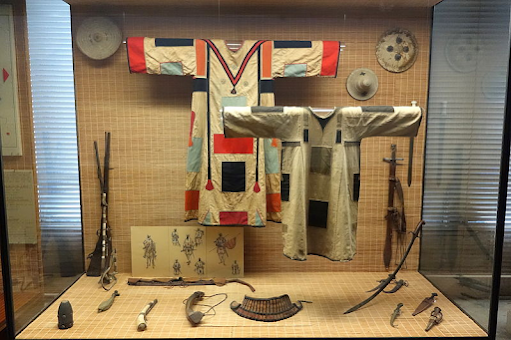R.S. O'Fahey, (1970) States and State Formation in the Eastern Sudan
R.S. O'Fahey, States and State Formation in the Eastern Sudan (Khartoum: Sudan Research Unit, 1970).
In discussing state formation in the eastern Sudanic region, O'Fahey focuses upon the kingdoms of Wadāy and Dār Fūr, the border states between them, and Sinnār (2). O'Fahey singles out environmental, commercial, and political aspects as being of key importance (3).
Though the states of the eastern Sudan were multi-tribal, the dynasties ruling them tended to originate in the central sedentary zone. This leads to the suggestion that such societies may have tribal origins (3–5).
O'Fahey postulates that the origin of the 'Wise-Stranger' myth, which characterizes these states, may be a remembrance of the arrival of long-distance trade in the regions discussed. It is also suggested that trade acted as a stimulant to state formation, as imported arms increased the power of the sultans, and trade spurred encroachments into the northern (for camels) and southern (for slaves) zones by the central sultans (5–6). Imported arms gave the sultan the advantage over both his enemies and his local allies, with imported goods acting as gifts to those allies that served him well (8).
These states tended to witness the alienation of the original tribal group and the sultan, in some instances causing the sultan to place a greater reliance on slaves (9). Slaves were valuable as they could be more reliable than tribal levies; however, the process of replacing such levies with slaves could cause conflict or even rebellion against the sultan (6–7, 9). Otherwise, the sultan, utilizing his role as chief intermediary, could 'balance' the interests of the tribes against one another (or against the merchants/fakīs, but they tended to lack the strength needed). This 'balancing' strategy could also cause conflict; O'Fahey utilizes as an example the revolt that occurred against Tayrāb's half-Zaghāwa successor, Isḥāq (9–10). In the 18th century they also developed (primarily in Sinnār and Dār Fūr) land grant systems by which the sultan "could create bonds between themselves and the chiefs, title-holders and religious dignitaries" (10).
It is interesting that O'Fahey should note that the Mahdiyya "seen under one aspect" could be considered "merely the latest manifestation of state-forming activity in this region" (11 n 3), particularly so given the formation of the Masālīt sultanate amidst Mahdist activities in Dār Fūr (1; see further: Kapteijns 1985).
Though the states of the eastern Sudan were multi-tribal, the dynasties ruling them tended to originate in the central sedentary zone. This leads to the suggestion that such societies may have tribal origins (3–5).
O'Fahey postulates that the origin of the 'Wise-Stranger' myth, which characterizes these states, may be a remembrance of the arrival of long-distance trade in the regions discussed. It is also suggested that trade acted as a stimulant to state formation, as imported arms increased the power of the sultans, and trade spurred encroachments into the northern (for camels) and southern (for slaves) zones by the central sultans (5–6). Imported arms gave the sultan the advantage over both his enemies and his local allies, with imported goods acting as gifts to those allies that served him well (8).
These states tended to witness the alienation of the original tribal group and the sultan, in some instances causing the sultan to place a greater reliance on slaves (9). Slaves were valuable as they could be more reliable than tribal levies; however, the process of replacing such levies with slaves could cause conflict or even rebellion against the sultan (6–7, 9). Otherwise, the sultan, utilizing his role as chief intermediary, could 'balance' the interests of the tribes against one another (or against the merchants/fakīs, but they tended to lack the strength needed). This 'balancing' strategy could also cause conflict; O'Fahey utilizes as an example the revolt that occurred against Tayrāb's half-Zaghāwa successor, Isḥāq (9–10). In the 18th century they also developed (primarily in Sinnār and Dār Fūr) land grant systems by which the sultan "could create bonds between themselves and the chiefs, title-holders and religious dignitaries" (10).


Comments
Post a Comment